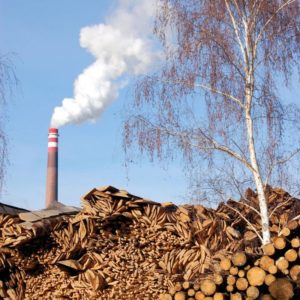If you hate forests and love throwing your money away on greenwashing scams, stop reading right now. You probably won’t be interested in the story of how the biomass and wood pellet industries persuaded policymakers to pay billions of dollars to destroy forests for “clean, renewable” energy, all while emitting more climate-warming carbon dioxide than coal.
Still here? OK. This story is true, all of it. But it’s not just more gloom and doom — there’s something you can do.
Worldwide, countries are promoting renewable energy to displace fossil fuels, usually with financial subsidies and tax breaks. If you live in a state with a renewable energy portfolio, or if you’re a federal taxpayer, some of your dollars go to “clean” energy generation. The climate benefits are accumulating slowly, but the benefits to public health are immediate in terms of reduced air pollution, which kills and disables thousands each year.
Except when it comes to renewable energy from “biomass” (and garbage, but that’s a story for another day). Power plants burning biomass (mostly forest wood, but also chemically treated wood, sewage sludge, animal waste and tires) belch out as much or more soot and smog per megawatt-hour as coal plants, and more climate-warming carbon dioxide, too.
All this might seem to disqualify biomass from renewable energy subsidies, but back when the rules were being written policymakers were not that picky about what qualified as renewable energy. They got around the inconvenient fact that biomass plants emit more carbon pollution than coal with an arcane rule of international greenhouse gas reporting (stay with me!) whereby the carbon-dioxide emissions from burning biomass are assigned to the “land sector,” rather than the energy sector, where the carbon pollution actually occurs.
The biomass industry’s sleight of hand was to then claim that carbon pollution from burning wood actually has zero effect on the atmosphere as long as harvesting is “sustainable,” meaning they can cut and burn all the trees they want over here as long as forests over there are growing just a bit more wood than is being cut, so that land carbon stocks are maintained.
Of course, those forests “over there” were already growing and removing carbon dioxide from the air and they don’t magically increase their carbon uptake when more forests are burned for fuel. If this is too abstract, consider a financial analogy: try telling your local bank that you spent down your account, but you’d like them to refill it with interest earned on other customer accounts. That’s about as plausible as the biomass industry claim that cutting and burning trees has zero carbon pollution as long as trees are growing somewhere else.
The biomass industry has sailed through this self-created “carbon loophole” to increase massively forest harvesting for fuel. In the European Union, policymakers can’t throw money at biomass energy fast enough, subsidizing it with more than $6.5 billion in 2017 alone. Given our extensive forests compared to Europe, it was inevitable that forestry interests in the United States and Canada looked to cash in.
The effects have been worst in the southeastern United States where, in just one decade, the wood pellet industry has gone from essentially non-existent to clearcutting tens of thousands of acres per year, chopping, pulverizing, extruding, cooking and pelletizing entire forests that are then shipped to Europe to be burned as renewable fuel. An ignominious and ironic fate for ancient wetland hardwoods of the south, indeed, to be burned in the name of “green energy” in the furnaces of Europe.
Yes, this is depressing, most of all because it’s so stupid and preventable. You can do something about it, though, and it’s easy. Here in the United States, people often have a choice about the renewable energy they can purchase. Clean energy doesn’t come out of smokestack! Call your utility and tell them you only want your dollars supporting only zero-emissions renewable energy, not wood- and garbage-burning plants.
Be nice to the scientists and activists fighting on your behalf to protect forests and the climate. And this spring, plant a couple of trees for climate action — but don’t be surprised at how slow they grow.

